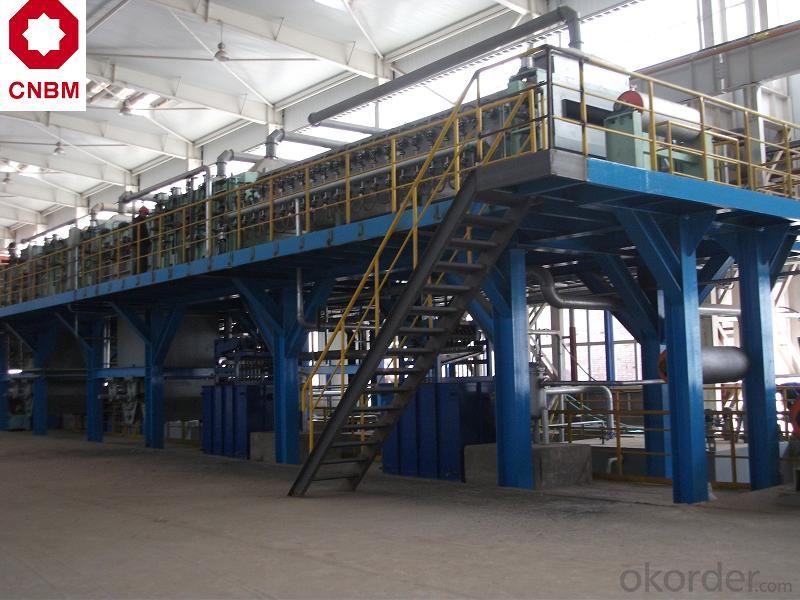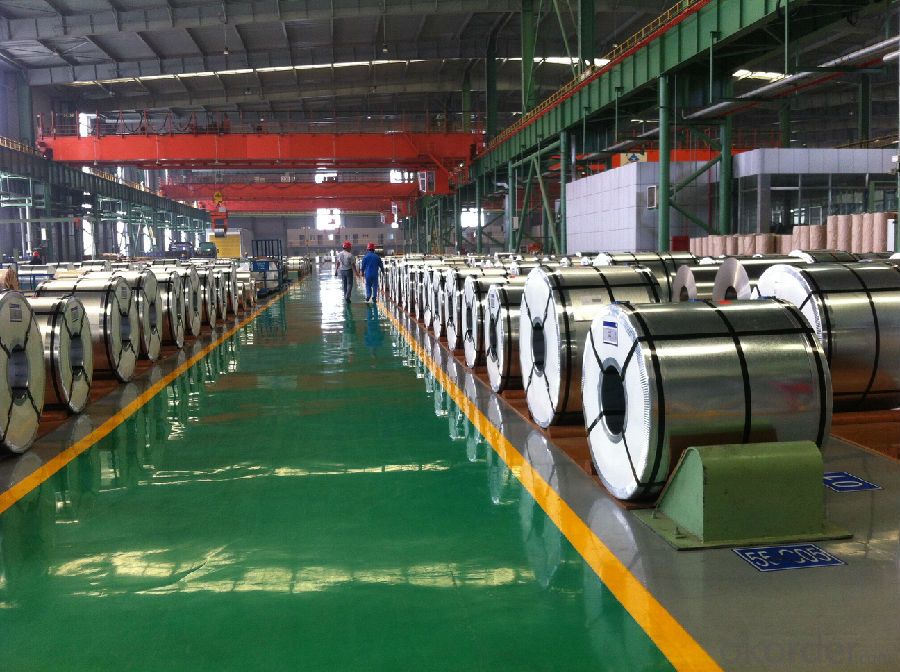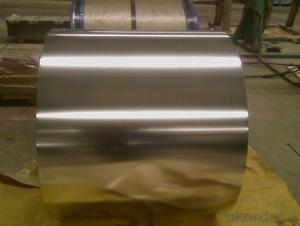MR/SPCC, Electrical Tinplate for Industrial Usage
- Loading Port:
- China main port
- Payment Terms:
- TT or LC
- Min Order Qty:
- 20 m.t.
- Supply Capability:
- 50000 m.t./month
OKorder Service Pledge
OKorder Financial Service
You Might Also Like
Item specifice
1.Tinplate production Process
cold rolling mill---degreasing production line---tension leveler---batch annealing furnaces/continuous annealing line---tin coating line---cutting line---stock area
2. Specification
standard: GB/T2520
Material: MR /SPCC
Thickness available: 0.16-0.50MM
Width available: 600~1050MM
Temper grade: T1 – DR8
Tin coating: ordinary 1.1g/1.1g~8.4g/8.4g/m2
Package: sea worthy export package.
Applications: Tinplate for chemicals & paint cans, industrial cans, food cans
3. Our factory photo:


4. FAQ
a. What’s the price difference between SPCC & MR?
Our MR is about usd 15~20/mt higher than SPCC; b. What’s the difference between SPCC & MR
They have difference element content, MR is better than SPCC in anti-rust and deep drawing.
Steel | C | Si | Mn | P | S | Cu | Others |
MR | ≤0.09 | ≤0.03 | ≤0.35 | ≤0.02 | ≤0.025 | ≤0.1 | ≤0.35 |
SPCC | ≤0.12 | ≤0.5 | ≤0.035 | ≤0.025 |
c. What production standards you accept?
We could accept production standards upon our customer request, such as JISG 3303, DIN EN10202, GB/T2520 etc. Our tinplate could meet these standards.
d. If we want to place order, is there any requirement about the booking time?
We need to purchase raw material in advance. Around date 20 per month our production plan will be finalized. So it’s better if customer could place order before date 20 per month, otherwise the delivery time will delay one month.
- Q:How does tinplate affect the overall product tamper-evident features?
- Tinplate enhances the tamper-evident features of a product by providing a strong and durable packaging material. Its rigidity and resistance to punctures or tampering make it difficult for unauthorized access or tampering. Additionally, tinplate can be sealed tightly, ensuring that any attempt to open the product is easily detectable. Overall, tinplate plays a crucial role in enhancing the tamper-evident features of a product, ensuring its integrity and safety.
- Q:How is tinplate affected by exposure to light?
- Tinplate is not significantly affected by exposure to light, as it is a durable material that does not undergo any noticeable changes or degradation when exposed to light.
- Q:How does tinplate withstand corrosion?
- Tinplate withstands corrosion due to the protective properties of tin. The tin coating acts as a barrier between the underlying steel and the surrounding environment, preventing direct contact and oxidation. Tin has excellent corrosion resistance, even in humid and acidic conditions, making tinplate a reliable and durable material for various applications.
- Q:What are the common testing methods for tinplate?
- Some common testing methods for tinplate include visual inspection, thickness measurement, adhesion testing, corrosion resistance testing, and tensile strength testing.
- Q:Can tinplate packaging be used for gardening products?
- Yes, tinplate packaging can be used for gardening products. Tinplate is a durable and corrosion-resistant material that can protect gardening products from moisture, sunlight, and other external elements. It is commonly used for packaging seeds, fertilizers, gardening tools, and other related products.
- Q:How does tinplate contribute to the convenience of pet care products?
- Tinplate contributes to the convenience of pet care products by providing a durable and lightweight packaging solution that helps to preserve the quality and freshness of the products. It is easy to handle and store, making it convenient for pet owners to use and transport the products. Additionally, tinplate packaging is resistant to corrosion and can be easily recycled, promoting sustainability in the pet care industry.
- Q:Can tinplate be used for packaging household cleaning products?
- Yes, tinplate can be used for packaging household cleaning products. It is a durable and versatile material that provides excellent protection and preservation for such products. Additionally, tinplate is resistant to corrosion, making it suitable for storing various cleaning agents safely.
- Q:How can recycled tin cans be recycled?
- Longhu white tin cans crusher is a company based on years of manufacturing experience carefully developed recovery special grinder, the crusher machine advantages in traditional variety, make full use of impact, shear, impact each other, grinding theory carefully developed.
- Q:What are the common quality standards for tinplate?
- The common quality standards for tinplate include factors such as the thickness and uniformity of the tin coating, the absence of defects such as rust, scratches, or dents, the overall strength and durability of the tinplate, and compliance with regulatory standards for food safety.
- Q:How does tinplate handle exposure to extreme temperatures?
- Tinplate is known for its excellent heat resistance properties, allowing it to handle exposure to extreme temperatures quite well. It can withstand high heat without deforming or melting, making it suitable for various applications that involve extreme temperature conditions.
1. Manufacturer Overview |
|
|---|---|
| Location | |
| Year Established | |
| Annual Output Value | |
| Main Markets | |
| Company Certifications | |
2. Manufacturer Certificates |
|
|---|---|
| a) Certification Name | |
| Range | |
| Reference | |
| Validity Period | |
3. Manufacturer Capability |
|
|---|---|
| a)Trade Capacity | |
| Nearest Port | |
| Export Percentage | |
| No.of Employees in Trade Department | |
| Language Spoken: | |
| b)Factory Information | |
| Factory Size: | |
| No. of Production Lines | |
| Contract Manufacturing | |
| Product Price Range | |
Send your message to us
MR/SPCC, Electrical Tinplate for Industrial Usage
- Loading Port:
- China main port
- Payment Terms:
- TT or LC
- Min Order Qty:
- 20 m.t.
- Supply Capability:
- 50000 m.t./month
OKorder Service Pledge
OKorder Financial Service
Similar products
New products
Hot products
Hot Searches
Related keywords



























